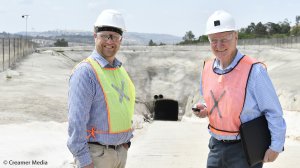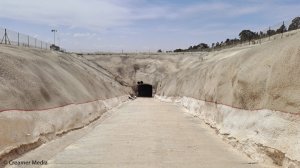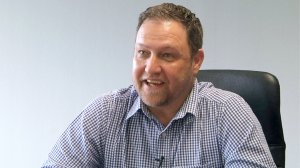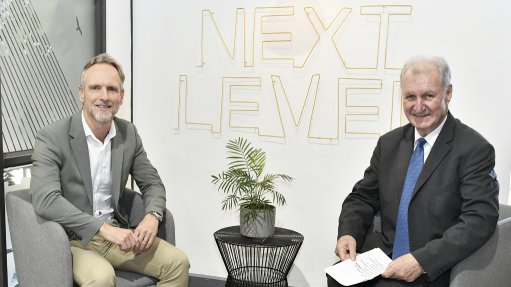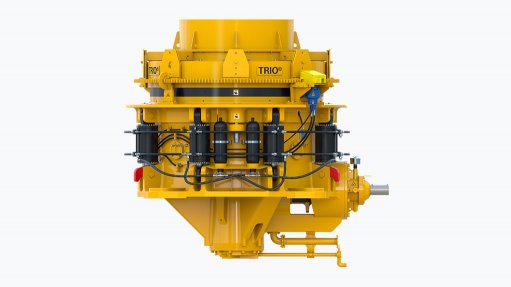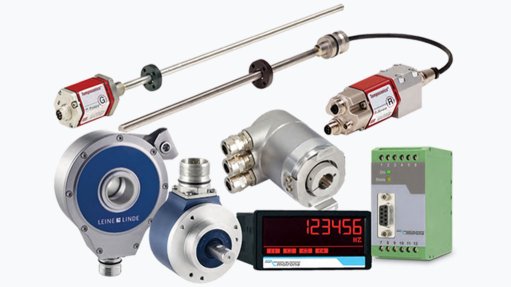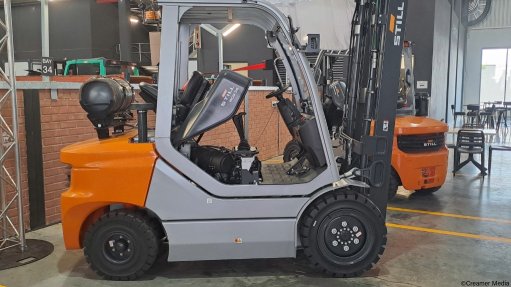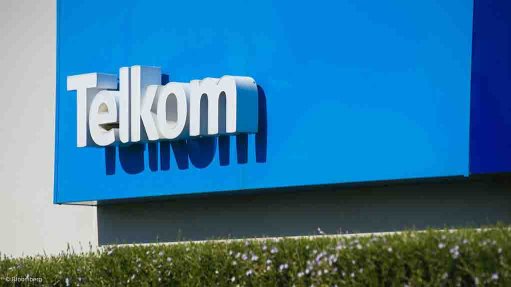Golden City being put back on gold map by exciting new West Wits gold project

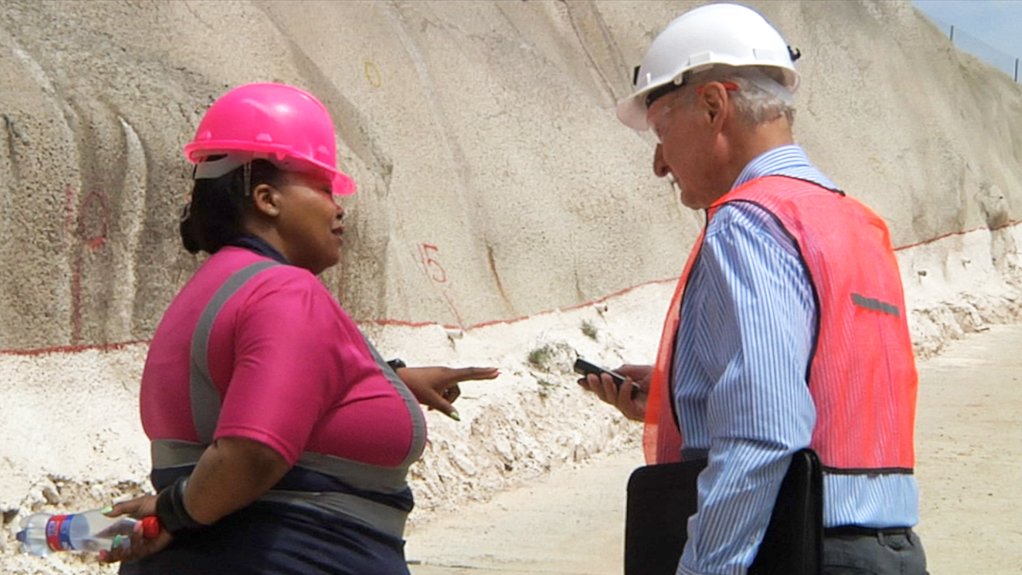

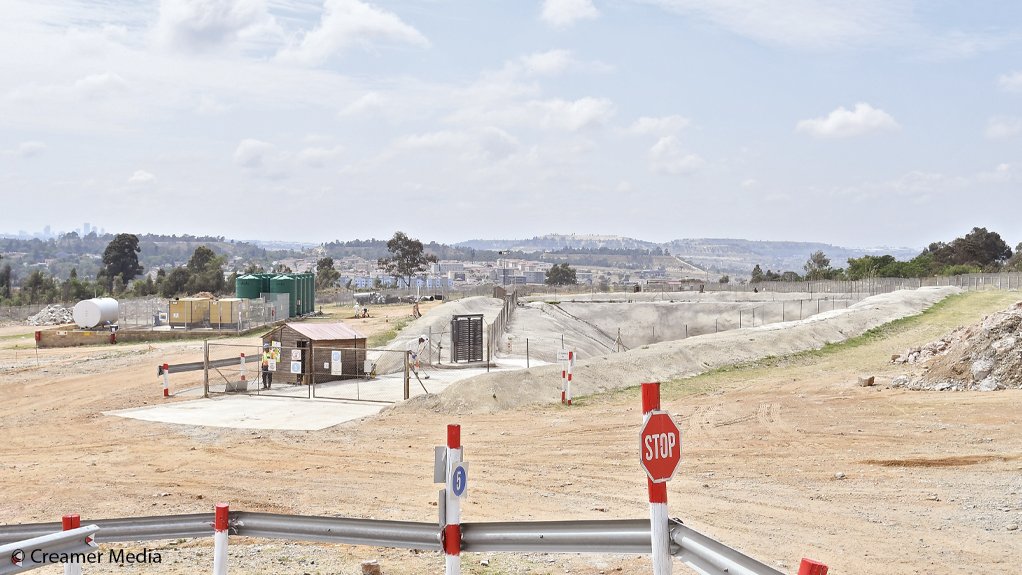


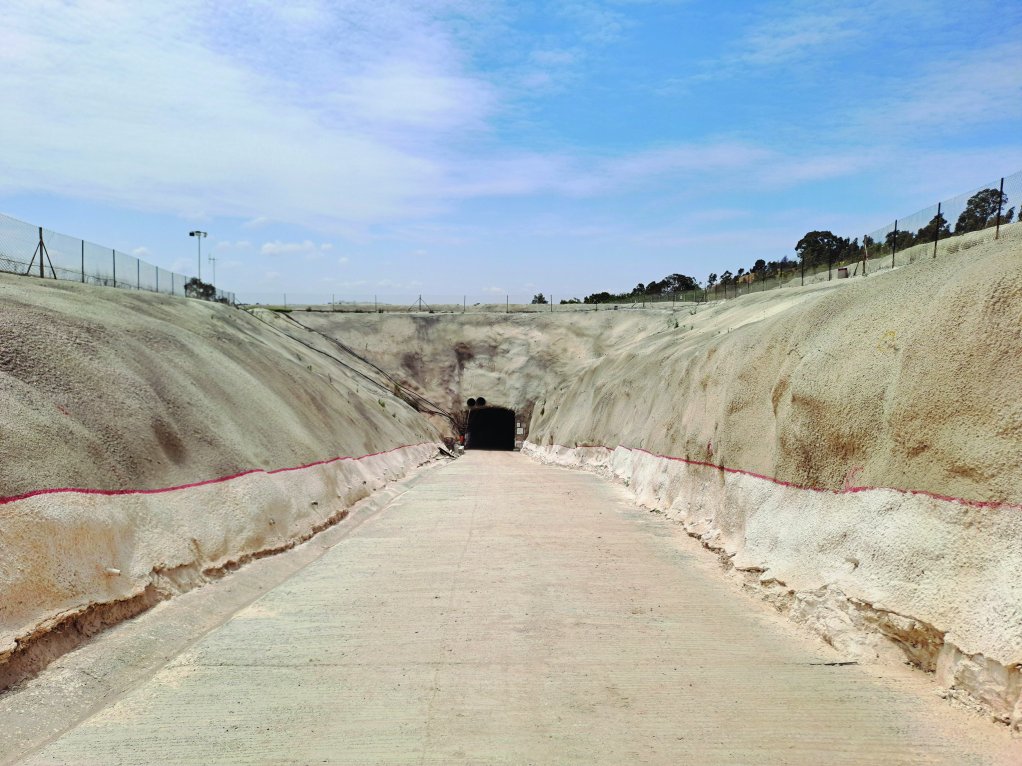
West Wits Mining CEO Rudi Deysel interviewed by Mining Weekly's Martin Creamer. Video: Creamer Media's Shadwyn Dickinson.
West Wits Executive Director, Corporate Affairs Head Tozama Kulati Siwisa (left) with Mining Weekly's Martin Creamer.
Qala Shallows decline.
Photo by Creamer Media Chief Photographer Donna Slater
Qala Shallows site.
West Wits Mining CEO Rudi Deysel (left) at decline entrance with Mining Weekly's Martin Creamer.
Photo by Creamer Media Chief Photographer Donna Slater
West Wits Mining CEO Rudi Deysel.
Photo by Creamer Media
Qala Shallows decline.
Photo by Creamer Media Chief Photographer Donna Slater
Engineering News & Mining Weekly has just visited West Wits Mining, where Johannesburg’s former golden glow is beginning to re-show – and at a cracking pace.
The gold project is a close 15 km west of Johannesburg’s central business district in South Africa’s province of gold, and the Engineering News & Mining Weekly team was able to observe first-hand a pile of gold-bearing ore that has already been brought to surface.
Quite remarkably, this gold ore is from an untouched block of Qala Shallows’ reef – yes, from virgin rock – and the fact that there’s still a lot more to come is emphasised by the word Qala, which is Zulu for ‘start’, because Qala Shallows is only the start of much more to come.
The word ‘shallows’ is also appropriate because, in South Africa’s underground gold mining terms, Qala Shallows is extra-ordinarily shallow.
“It’s running at a depth of around 800 m and we intend to mine a strike length of about 2 km.
“We’ve got quite a big mining right footprint of about 16 000 ha but our current focus is on the in-situ untouched block from surface,” West Wits Mining CEO Rudi Deysel outlined to Engineering News & Mining Weekly.
The Sydney-listed company’s Witwatersrand Basin project is located in South Africa’s proven Central Rand goldfield.
A big factor now is the building of a stockpile and the first gold bar is scheduled to be poured during the first quarter of 2026, which is impressively near-term.
A 30 000 t ore stockpile by the end of the first quarter of 2026 will ensure a consistent supply of ore to the Ezulwini processing plant 40 km away, which is part of a toll treatment agreement already done and dusted with precious metals major Sibanye-Stillwater, Ezulwini’s owner.
The Qala Shallows, an integral part of the overall project, is on the way to being ramped up to an initial steady state of 70 000 oz/y.
“Before we started with this project, we spent a lot of time setting out our code of practices, our standard operating procedures.
“What is great about West Wits is that we’re also a member of Minerals Council South Africa, and with a lot of support from the council we were able to roll out industry standards from day one.
“There’s already a high regard and respect for safety and the big message that we send out is that you live safety as part of your life and ‘my safety is your safety’,” Deysel reported.
Then, Phase 2 will come close to trebling output to 200 000 oz/y – “and we most certainly have the resources to do that”.
West Wits Mining has been able to raise kick-start equity funding on the Australian Stock Exchange and operation for up to a year will be helped by the self-generation of revenue from own production, ahead of drawdown from a syndicated loan facility secured from major South African lenders, the State-owned Industrial Development Corporation and Absa Bank.
“Today, we can say we’re fully funded to start with Qala producing up to a steady state of 70 000 oz of gold a year and have a life-of-mine of 17 years.”
The updated definitive feasibility study, released in July, reinforces project value and economic fundamentals. It shows a pretax net present value (NPV), at a 7.5% discount rate, of $719-million and an internal rate of return of 93%.
Payback from the end of the peak funding period is estimated at eight months and at 3.3 years from the start of development.
Peak funding is estimated at $44-million over a 2.6-year period, a reduction from $54-million over three years in the 2023 definitive feasibility study.
Average steady-state production is at an estimated all-in sustaining cost of $1 181/oz.
Kimberley reefs – K9A and K9B – are the reefs that will be processed during the life of the project.
The compliant mineral reserves are estimated at 4.6-million tonnes grading at 2.60 g/t for 383 934 oz of gold.
The total mineral resources for the K9A reef are estimated at 8.1-million tonnes grading at 4.8 g/t gold for 1.2-million ounces of gold, and 10.5-million tonnes at 4.5 g/t gold for 1.5-million ounces of gold for the K9B reef.
The mine plan’s lower cutoff grade of 1.31 g/t has been reduced from 2 g/t in 2023, which allows for the inclusion of additional ore and an accelerated production profile.
The project’s use of conventional breast mining is in a configuration considered optimal for the Qala Shallows deposit.
The stopes will be accessed by strike drives developed on the K9B reef horizon and the K9A and K9B stopes will be accessed from this infrastructure.
The strike drives will connect to the decline system developed from the existing Qala Shallows adit boxcut, located centrally in the mining area and in the footwall of the K9B reef.
The brand new decline will access the centre of the strike from what was known in the old days as the donkey adit because of the carts taken through it into the mine.
Not that long ago, going underground through the adit meant a crawl-through by the West Wits crew, but the broad new decline has changed all that to the extent that trackless vehicles can now enter into a modernised environment that has ventilation, power and water.
The excellent ground conditions have modern, systematic support that includes anchors and shotcreting to prepare for mechanised mining.
Engineering News & Mining Weekly: What made you choose this adit as your entry passage?
Deysel: It was chosen because of its proximity to the untouched block of ground, an in-situ virgin block of ground that offers sustainable production for quite a big portion of the 17-year life-of-mine.
Contractor-Based Approach
Mining contractor Modi was mobilised in July and a contractor-based approach has been adopted.
The original-equipment manufacturers (OEMs) who supply the equipment also maintain the equipment, assuring availability.
The OEMs are local South African companies that manufacture in South Africa. The three main OEMs are Rham, which provides operational equipment including load-haul-dumpers, GST, which provides mining drill rigs, and HPE, which provides equipment that operates on high- pressure water – hydropower. Purified groundwater is used as closed-loop service water for the drill rigs and hydropowered equipment.
“We’re already working with hydropower underground and so far, it’s great. We get a lot of assistance, especially at the face, which is important to us, so every single piece of equipment is hydropowered,” said Deysel, while pointing out that conventional stoping is combined with trackless mechanised infrastructure development.
It’s pretty much the same layout as in the Twickenham mine and the Modikwa mine on the eastern limb of the Bushveld Complex.
The stope width is 1.4 m and the stope dips at an angle of 45° and a temporary workshop will support the mine for the next year.
Article Enquiry
Email Article
Save Article
Feedback
To advertise email advertising@creamermedia.co.za or click here
Comments
Press Office
Announcements
What's On
Subscribe to improve your user experience...
Option 1 (equivalent of R125 a month):
Receive a weekly copy of Creamer Media's Engineering News & Mining Weekly magazine
(print copy for those in South Africa and e-magazine for those outside of South Africa)
Receive daily email newsletters
Access to full search results
Access archive of magazine back copies
Access to Projects in Progress
Access to ONE Research Report of your choice in PDF format
Option 2 (equivalent of R375 a month):
All benefits from Option 1
PLUS
Access to Creamer Media's Research Channel Africa for ALL Research Reports, in PDF format, on various industrial and mining sectors
including Electricity; Water; Energy Transition; Hydrogen; Roads, Rail and Ports; Coal; Gold; Platinum; Battery Metals; etc.
Already a subscriber?
Forgotten your password?
Receive weekly copy of Creamer Media's Engineering News & Mining Weekly magazine (print copy for those in South Africa and e-magazine for those outside of South Africa)
➕
Recieve daily email newsletters
➕
Access to full search results
➕
Access archive of magazine back copies
➕
Access to Projects in Progress
➕
Access to ONE Research Report of your choice in PDF format
RESEARCH CHANNEL AFRICA
R4500 (equivalent of R375 a month)
SUBSCRIBEAll benefits from Option 1
➕
Access to Creamer Media's Research Channel Africa for ALL Research Reports on various industrial and mining sectors, in PDF format, including on:
Electricity
➕
Water
➕
Energy Transition
➕
Hydrogen
➕
Roads, Rail and Ports
➕
Coal
➕
Gold
➕
Platinum
➕
Battery Metals
➕
etc.
Receive all benefits from Option 1 or Option 2 delivered to numerous people at your company
➕
Multiple User names and Passwords for simultaneous log-ins
➕
Intranet integration access to all in your organisation


